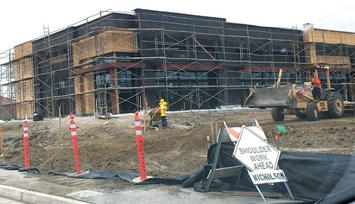
I've spent many, many years of my career working to improve the economic development prospects of communities. Wanting to make a meaningful, positive contribution to the revitalization of cities is what pushed me into this career path. More to the point, I've spent a good deal of that time working in places that were facing stiff economic headwinds working against them. I hear of the issues facing some of the booming coastal metros dealing with expansion of the New Economy, and while I can't say I'm envious, I can definitely say it's an entirely different world than where I come from.
One refrain I've consistently heard, mostly from frustrated local residents, is that their local government simply isn't doing enough to stimulate economic development. They ask tough and pointed questions: what are we doing to bring middle-class jobs to our community? We're good people; why don't we at least have a supermarket or sit-down restaurant? Why are commercial vacancies increasing, instead of decreasing? Why did this retailer/homebuilder/commercial developer choose that community over ours? Why are we forced to go to Community X to have the shopping experience, the living experience, we desperately want and rightfully deserve?
Every time I hear this I respond with the truth: our community is using every tool at its disposal to improve the economic development profile. We're doing everything we can to increase job opportunities for existing and future residents, to widen our range of retail options, to grow our tax base so we can minimize any burden to homeowners. This is indeed what I do, every day.
But scratch the surface and the truth is far more complex. In my view there are multiple layers, far removed from the municipal government level, that few laypeople realize have substantial impact on local community and economic development. The fact is there are actors and factors that control development patterns, starting at the metropolitan level but funneling all the way down to the half-vacant shopping center near your home. There is an economic development hierarchy at work that's often created winners and losers before municipalities have had a chance to weigh in.
I've identified six actors and factors at work in community and economic development. At best, municipalities can intervene at each level to increase their influence and regain control of the economic development environment. This is tough, because those at the top of this hierarchy, in my opinion, often take great pains to keep their distance from local officials. However, I'd wager that places that have robust economic development profiles probably have strong connections with those at or near the top of the hierarchy. Conversely, communities that struggle have few connections at the top.
At worst, municipalities can take the passive approach and wait until decisions made far above them filter down and become actionable on the ground. As odd as it sounds, this is actually the approach that the vast majority of today's urban America took in the post-World War II era: they relied on policy changes at the federal level that filtered down to the development of the suburban subdivision you live in today (or facilitated the rebound of the hot urban neighborhood your child lives in now). There are many municipal officials who believe that their community's early success was because of efforts they led. It's more accurate to say that their community took advantage of headwinds that blew in their direction, rather than against it. I call this the "standing-on-third-base-and-think-they-hit-a-triple" syndrome.
People don't necessarily talk about decisions being made in smoke-filled rooms anymore, or how nebulous "powers that be" are implementing a nefarious "plan" that will enhance their wealth. But there is a deep disconnect between decision makers and local community users/consumers. Here's how I see the community and economic development hierarchy, ordered by social/interpersonal distance (furthest to closest) from municipal officials:
Banks/investors. At the absolute top of the hierarchy. Financial actors are the ones who put their money behind the developments we want in our communities. Simply put, they go where they believe money can be made, and that argument is made to them by those at lower levels. That said, the reverse is also true: if no one is making the argument to them that a place can make money for them, it's not heard at all.
The market. By "market" I'm specifically zeroing in on the potential users of commercial and residential space in a given community: national, regional and local retailers, job producing businesses and other commercial users, the constantly evolving and morphing pool of potential homebuyers and renters looking for places to live. In this context the size of the market has everything to do with the local economic development profile; a big and expanding market can create widespread economic development, while a small or stagnant market can limit economic development prospects.
Read the rest of this piece at Corner Side Yard blog.
Pete Saunders is a writer and researcher whose work focuses on urbanism and public policy. Pete has been the editor/publisher of the Corner Side Yard, an urbanist blog, since 2012. Pete is also an urban affairs contributor to Forbes Magazine’s online platform. Pete’s writings have been published widely in traditional and internet media outlets, including the feature article in the December 2018 issue of Planning Magazine. Pete has more than twenty years’ experience in planning, economic development, and community development, with stops in the public, private and non-profit sectors. He lives in Chicago.
Photo information: Construction underway for a new 130,000 square foot shopping center located in Hollister, CA, May 17, 2019. Source: sanbenito.com












